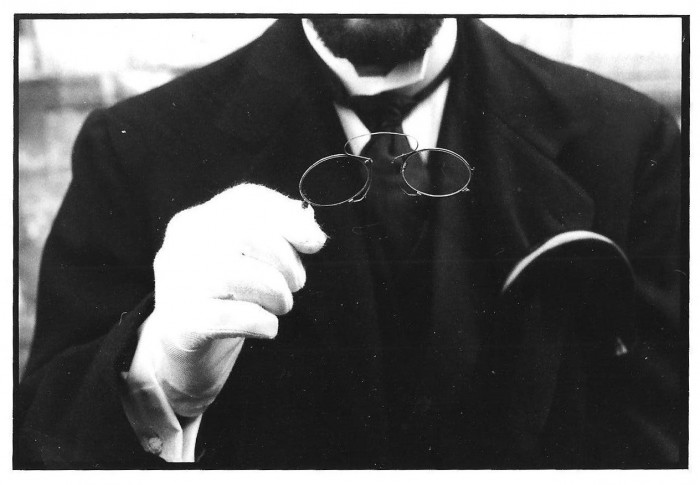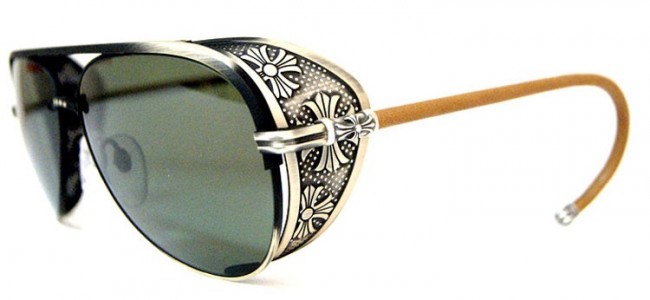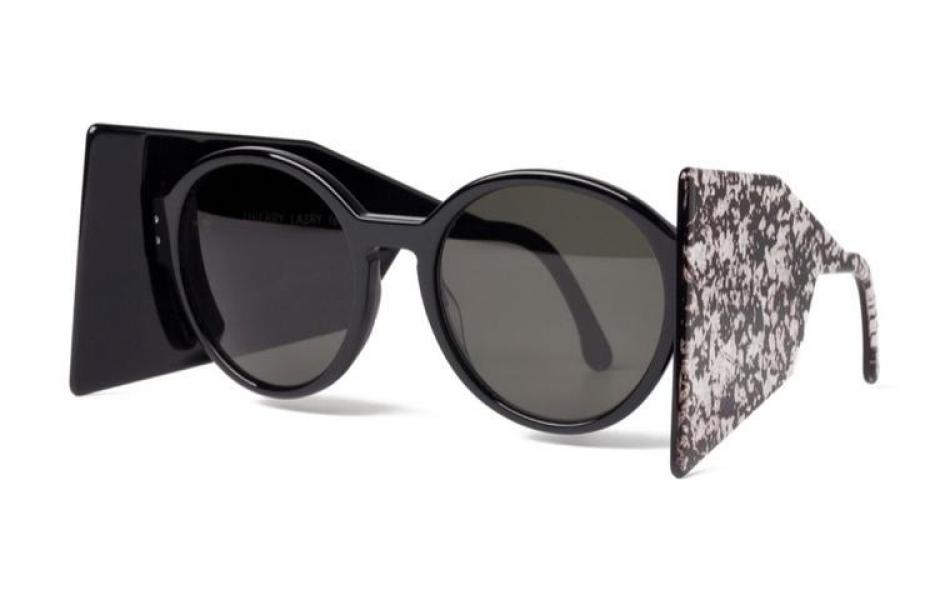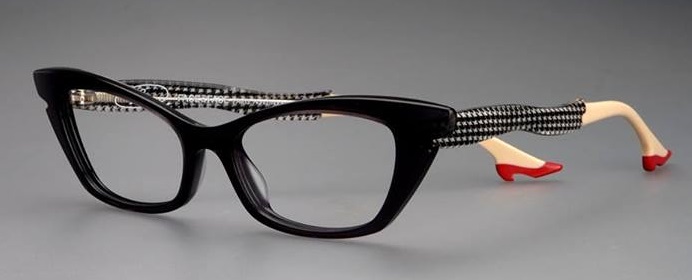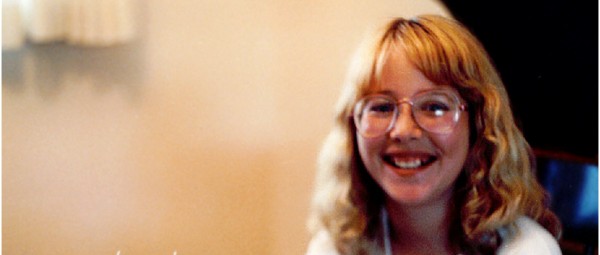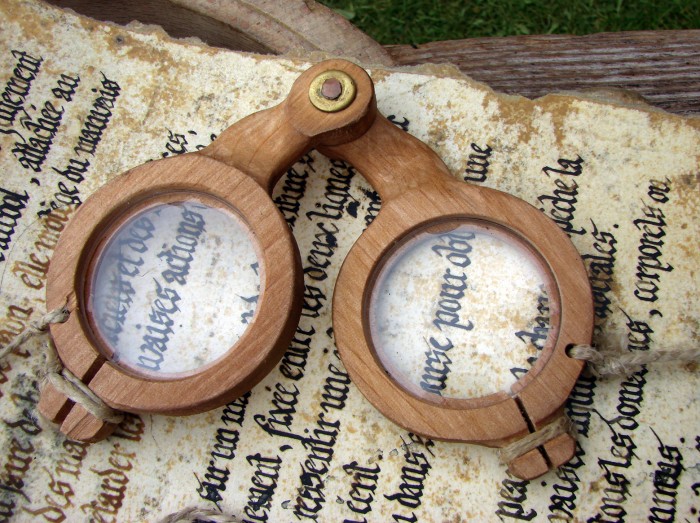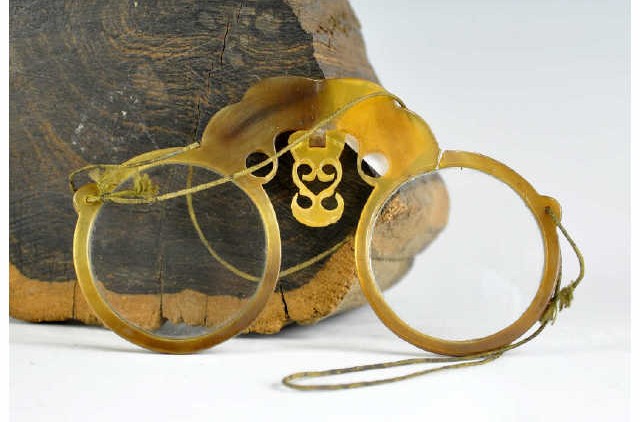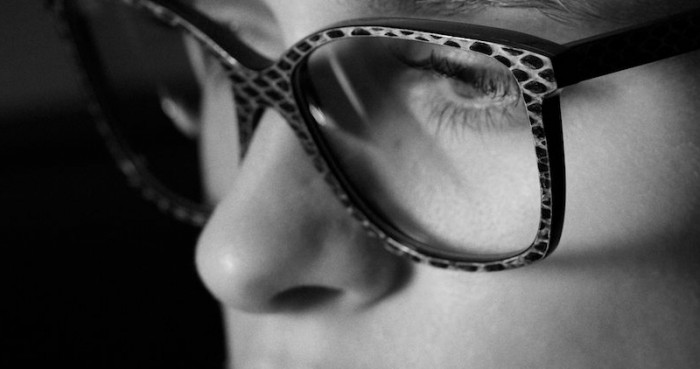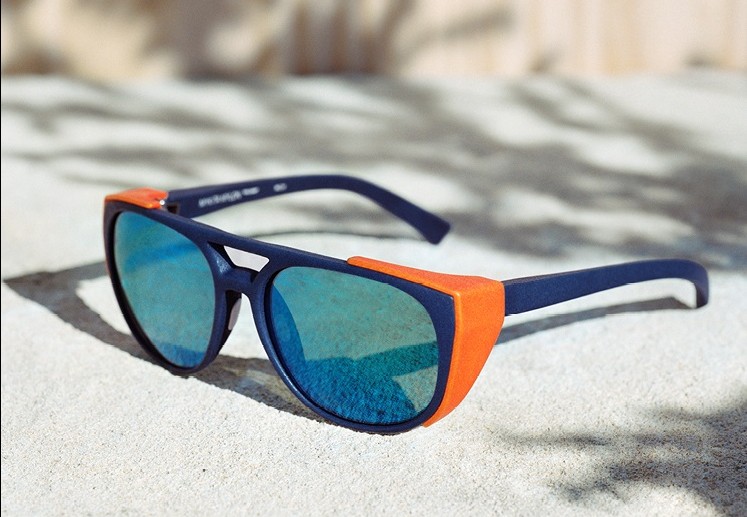Sometimes very modern, some other times classic and vintage, the glasses we have in The House Of Eyewear are a legacy from centuries of evolution.
At the end of Middle Age, presbiopic monks used magnifying glasses laid directly on the text. They were then replaced by actual glasses. They didn’t have sides and they were nailed together around the nose piece.
ll
ll
In 1728, English optician Edward Scarlett invents glasses with « temples ». Called this way because at the time, people wore wigs and the sides of spectacles had to rest on the temples. At first they were very uncomfortable but over the years and with the technological progress, they can now be adjusted and fitted perfectly. Sides are one additional support for the creativity of our designers.
Leather and blinders for Chrome Hearts.
ll
ll
or Thierry Lasry
Sides with shoes on from Bocca collection of Face a Face
ll
ll
Technical progress does not only involve sides. Lens quality improvement has allowed the correction of myopia in the XVth century and astigmatism three centuries later. Glasses got generalised and any intellectual wore their monocle, pince-nez or lorgnon with style and elegance. They were an actual social statement accessories.
Skipping the shameful time in the 80’s immortalised in our family portraits, glasses are not constraints anymore and even are desired fashionable products, a way of asserting one’s personality.
ll
ll
Social status is also determined by the type of material the frames are made of. Since the XIIIth century, spectacles have been made of wood, horn, leather, or for wealthier people in silver, bone, ivory or turtle shell.
ll
ll
Most of this materials are still used is modern glasses. Below is the perfect example of Ralph Vaessen matching together horn and stylish design.
ll
ll
Cutting edge technologies have allowed our designer to create very light titanium, precious or rimless spectacles. Lately, Nylon glasses have arrived through the 3D printing process.
ll

